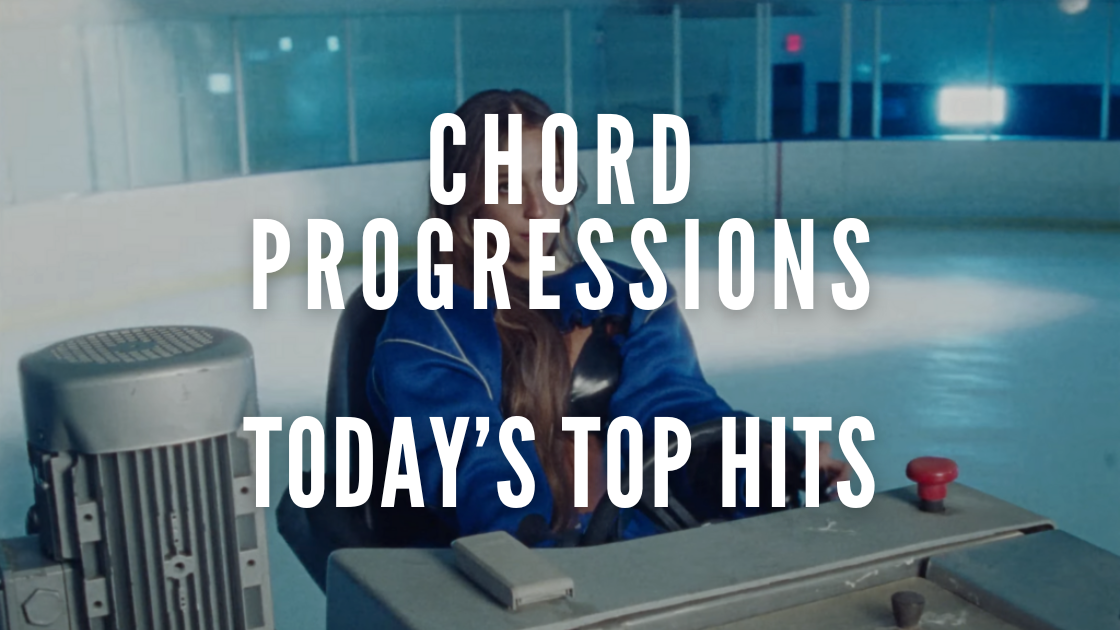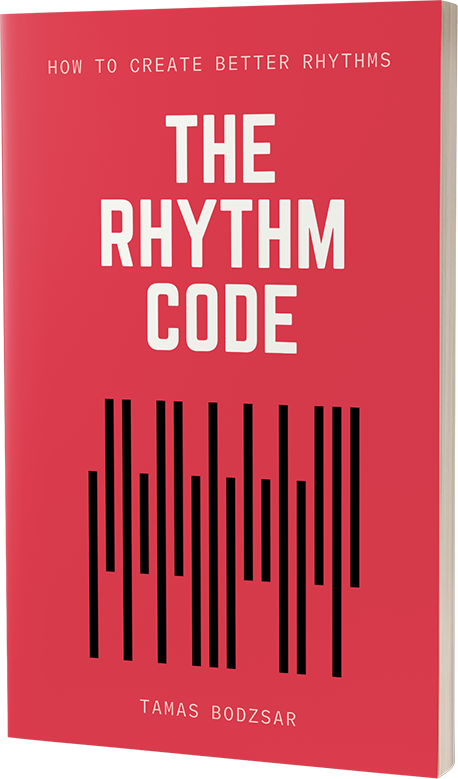
In this blog post, I’m going to write about what chord progressions work today. And if you have read any articles or seen any videos on this topic, you will be surprised to see that what most people teach is completely wrong.
What everyone is teaching about pop music, is completely false. I see it all the time, people saying that the “Axis chord progression” is the most typical chord progression in pop music and that’s a chord progression you can use to write a hit song.
But they are wrong.
What is the Axis Chord Progression?
The Axis Chord progression is the I – V – VIm – IV, these are, for example, in the key of C major: C – G – Am – F chords.
(Another version of this is the same four chords but in different order: Am – F – C – G)
The name comes from the Australian comedy group “The Axis Of Awesome”, who made this phenomenon widely recognized when they uploaded a video about a decade ago, and in this video, they performed dozens of hit songs that were using the same chord progression.
But if we check the top hits today, we don’t really find this chord progression anywhere.
I’ve even seen a comment today saying Taylor Swift writes all her songs with these four chords.
In reality, Taylor Swift haven’t used this chord progression for at least 12 years now. And she is not the only one. The “Axis Chord Progression” was a thing a decade ago, and before 2010, but it’s not a thing anymore.
People probably got bored of it. How successful songwriters make hit songs today is SOMEWHAT different from how they made songs a decade ago.
Here is the reality: I went through the top 50 songs on Spotify, wrote down ALL the chord progressions, and there were only TWO songs that used these four chords together within one section of a song.
The emphasys is on “together within one section”. Because they might use all of those four chords (I, IV, V, VIm) within the WHOLE song, but not within one section! (You will see exactly what I’m talking about.)
So there are only two songs in the top 50 today that is using the Axis Chord Progression, and they are not even in the top 30!
This means that 96% of the top hits avoid using the Axis Chord Progression.
So let’s see what really works today. I will write all the chord progressions with Roman numerals and also with regular chord symbols within the key of C major.
The first song is “greedy” by Tate McRae, and the chord progression is:
IV – IIm – VIm – V
F – Dm – Am – G
“Strangers” by Kenya Grace:
VIm – I – IV – IIm
Am – C – F – Dm
“Cruel Summer” by Taylor Swift:
verse:
IV – V – IIIm – VIm
F – G – Em – Am
chorus:
I – IIIm – VIm – IV
C – Em – Am – F
“Used To Be Young” by Miley Cyrus:
verse:
I – IIIm – VIm – IV
C – Em – Am – F
chorus:
I – III – VIm – IV
C – E – Am – F
Can you see the pattern here? These chord progressions are VERY similar to the Axis Chord Progression. But in each of these “new” chord progressions, there is ONE chord that is different:
The Axis Chord Progression
I – V – VIm – IV
OR
VIm – IV – I – V
Today’s Top Hits
IV – IIm – VIm – V
VIm – I – IV – IIm
IV – V – IIIm – VIm
I – IIIm – VIm – IV
I – IIIm – VIm – IV
I – III – VIm – IV
And that one chord is almost always the “I” OR the “V”. In fact… there is no chord progression that contains both the “I” and the “V”.
So they either omit the “V” and use the “I”, or they omit the “I” and use the “V”.
I also said that these songs may contain all the four chords of the Axis Chord Progression within the whole song, but not within one section.
And this is exactly what we can see in “Cruel Summer” by Taylor Swift. The verse contains the “V”, but not the “I”, and the chorus contains the “I”, but not the “V”.
Now that we’ve unraveled the myth of the Axis Chord Progression and unveiled the current trend in pop music, you might be wondering why songwriters are avoiding the traditional I and V combination. The answer lies in the ever-evolving landscape of music and the need for fresh, exciting sounds to capture the listener’s attention.
It’s important to note that many hit songs today still incorporate the familiar I and V chords within the entire song but refrain from placing them together within a single section. This approach keeps the music interesting and avoids predictability. Let’s delve further into the reasons behind these creative choices.
Elevated Tension and Release: The I and V chords, when played consecutively, create a sense of resolution. This musical “homecoming” can be wonderful in some contexts, but contemporary songwriters often seek to maintain tension and keep their listeners engaged. By separating these chords into different sections, they delay the gratification of that musical resolution, building anticipation throughout the song.
Subtle Variation: The modern pop landscape values subtle, intricate changes in chord progressions. By using progressions that are almost identical to the Axis Chord Progression but with a single tweak, songwriters infuse their music with a unique flavor. This small alteration is like adding a secret ingredient to a well-loved recipe, making it stand out from the crowd. In other words, the reason these “new” chord progressons work is because they are very similar to the Axis Chord Progression but they are a little bit different. And that can be the perfect recipe for a hit.
Creative Challenge: Music is as much about pushing boundaries as it is about sticking to conventions. Top songwriters enjoy the challenge of crafting something new and exciting while still nodding to established traditions. This desire to innovate drives them to experiment with different chord sequences.
Now, let’s take a closer look at some of the hit songs mentioned and analyze how they apply these modified chord progressions:
“Greedy” by Tate McRae: This song employs a IIm chord (Dm) instead of the traditional V (G). This substitution not only maintains tension but also adds a touch of melancholy to the mix, enhancing the emotional impact.
“Strangers” by Kenya Grace: The IIm (Dm) makes another appearance here, replacing the standard V (G). This progression adds a sense of introspection and depth to the music.
“Cruel Summer” by Taylor Swift: In the verse, Taylor Swift cleverly omits the I (C) and relies on the V (G) to keep things intense. The chorus, on the other hand, embraces the I (C) without the V (G), creating a rollercoaster of emotions that mirrors the lyrics.
“Used To Be Young” by Miley Cyrus: Miley’s song plays with both the I and V but omits the IV. This decision keeps the music dynamic and ever-changing, aligning with the theme of youthful nostalgia.
In essence, contemporary pop music is about finding the perfect balance between familiarity and innovation. Songwriters aim to surprise and delight listeners by subtly deviating from established norms while still delivering a catchy, memorable tune. As the music industry continues to evolve, so too will the chord progressions and creative choices that underpin its chart-topping hits.
So, the next time you sit down to write your own song, don’t feel bound by the old rules. Embrace the freedom to experiment, mix and match chords, and create something truly unique. After all, the magic of music lies in its ability to move hearts and minds, and there are countless ways to achieve that beyond the constraints of the Axis Chord Progression.
The secret pattern behind successful songs
Get the eBook for $7

